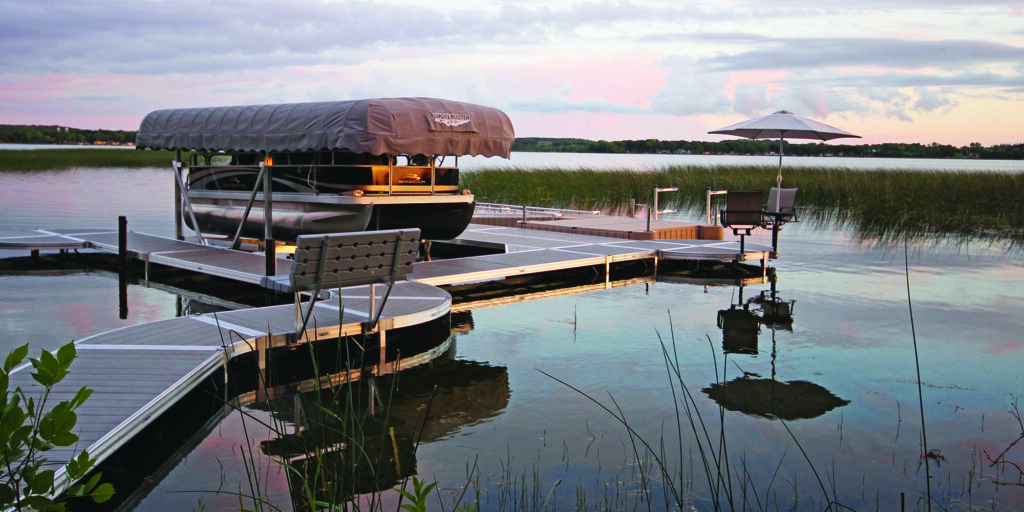
As the boating season approaches, preparing your dock is just as crucial as readying your boat. A well-maintained dock ensures safe and enjoyable access to the water. Spring cleaning for docks involves thorough inspections, cleaning, and preventative maintenance to address wear from winter and prepare for heavy summer use. Below, we outline a comprehensive guide to get your dock in top shape, blending practical steps with proactive care to keep it functional and attractive all season long.
Start with a Structural Inspection
Winter can be tough on docks, with ice, storms, and freezing temperatures causing unseen damage. Begin by walking the entire dock, checking for structural integrity. Look for cracked or warped boards, loose or missing bolts, and rusted hardware. For floating docks, inspect pontoons for dents, leaks, or corrosion. Pay close attention to joints and connections, as these are stress points. If you spot significant damage, consider consulting a marine contractor to ensure repairs meet safety standards.
Deep Clean for Safety and Aesthetics
A clean dock is both safer and more inviting. Over the off-season, algae, grime, and bird droppings can accumulate, making surfaces slippery and unsightly. Use a power washer with a low-pressure setting to remove buildup without damaging the dock’s surface. Opt for biodegradable, marine-safe cleaners to protect the surrounding water. For stubborn stains, a stiff-bristled brush works wonders. Wooden docks require gentle cleaning to avoid splintering, while composite or aluminum docks may need specific cleaners to restore their finish.
Protect with Sealants and Lubrication
Protecting your dock from summer sun and water exposure is key to its longevity. For wooden docks, apply a marine-grade sealant or stain after cleaning to shield against UV rays and moisture. Check the manufacturer’s recommendations for composite docks, as some require specialized coatings. Metal components like hinges, brackets, and cleats should be lubricated with a marine-grade lubricant to prevent rust and ensure smooth operation. This step is especially important in saltwater environments where corrosion happens faster.
Secure the Anchoring System
A dock is only as stable as its anchoring system. Inspect chains, cables, or pilings for signs of wear, rust, or fraying. For floating docks, ensure anchors are firmly set in the lakebed or riverbed and adjust cable tension to accommodate water level fluctuations. Fixed docks should have secure pilings, with no wobbling or leaning. Replace worn ropes with marine-grade lines and ensure cleats are tightly bolted for safe boat tie-ups.
Declutter and Organize
A tidy dock enhances both functionality and appearance. Remove debris like leaves, twigs, or washed-up seaweed from the dock and surrounding water. Clear away outdated or damaged equipment, such as frayed ropes, cracked fenders, or rusty tools. Consider installing weatherproof dock storage boxes to keep essentials like life jackets, docking lines, and cleaning supplies organized and protected from the elements.
Verify Electrical and Lighting Systems
If your dock has electrical features like shore power outlets or lighting, spring is the time to test them. Check outlets for corrosion or water ingress, and have a marine electrician address any faults. Test dock lights, replacing bulbs and cleaning lenses for maximum brightness. Solar-powered lights are a great low-maintenance option, but ensure panels are clean and unobstructed. Proper lighting improves safety for nighttime boating or docking.
Enhance Safety Features
Safety is paramount on any dock. Inspect ladders to ensure they’re securely mounted and free of slippery algae on the rungs. Install or replace reflective markers along the dock’s edges to improve visibility in low-light conditions. Check that life rings or rescue tubes are accessible, undamaged, and properly mounted. These small updates can prevent accidents and ensure your dock is ready for guests and family.
Optimize for Boat Docking
Finally, prepare your dock for seamless boat access. Adjust bumpers or fenders to align with your boat’s hull height and docking style, preventing scratches or damage. Clean fenders to remove algae that could mark your boat. Ensure cleats are securely fastened and positioned for easy tie-ups, and consider adding extra cleats if you expect multiple boats. A well-configured dock makes launching and docking stress-free.
Final Thoughts
Spring cleaning your dock is an investment in safety, durability, and enjoyment for the boating season. By addressing structural issues, cleaning thoroughly, and adding protective and safety features, you’ll create a reliable and welcoming gateway to the water. Start early to beat the rush on marine supplies and repair services, and you’ll be ready for smooth sailing—or docking—all summer long. For specific product recommendations or DIY repair tutorials, check online boating forums or marine supply websites for the latest insights.